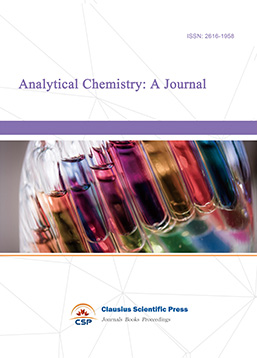Study on the Microstructure Characteristics and Mechanical Properties of Dissimilar Weld Joints of Coiled Tubing
DOI: 10.23977/jmpd.2022.060203 | Downloads: 25 | Views: 1538
Author(s)
Chuan Wang 1,2
Affiliation(s)
1 State Key Laboratory of Petroleum Resources and Prospecting, China University of Petroleum (Beijing), Beijing, China
2 School of Mechatronic Engineering, Southwest Petroleum University, Chengdu, China
Corresponding Author
Chuan WangABSTRACT
This work aims to investigate the microstructure and the mechanical behavior of dissimilar API X80-AISI 4130 steel welded joints of coiled tubing. The microstructure at the weld interface of the AISI 4130 steel side results in a relatively lower toughness. The HAZ of AISI 4130 steel has an obvious coarsening phenomenon. The tensile tests show that the deformation process of the dissimilar weld joint is mainly controlled by the two base materials: AISI 4130 steel at the beginning of the deformation and API X80 steel at its end. Charpy impact toughness tests conducted on dissimilar welded specimens led us to conclude that the higher Ni content accounts for a more gradual decline in impact tough-ness for AISI 4130 steel.
KEYWORDS
Dissimilar welding, Microstructure, Tensile test, Charpy impact toughness testCITE THIS PAPER
Chuan Wang, Study on the Microstructure Characteristics and Mechanical Properties of Dissimilar Weld Joints of Coiled Tubing. Journal of Materials, Processing and Design (2022) Vol. 6: 20-28. DOI: http://dx.doi.org/10.23977/jmpd.2022.060203.
REFERENCES
[1] Fricke, W. (2003) Fatigue analysis of welded joints: state of development. Mar. Struct., 16(3), 85–200.
[2] Carpinteri, A., et al. (2015) Fracture mechanics based approach to fatigue analysis of welded joints. Eng. Fail. Anal., 49(3), 67–78.
[3] Lee, S., Kim, B.C., Kwon, D. (1992) Correlation of microstructure and fracture properties in weld heat-affected zones of thermomechanically controlled processed steels. Metall. Trans. A, 23A(10), 2803–16.
[4] Rak, I., Treiber, A. (1999) Fracture behaviour of welded joints fabricated in HSLA steels of different strength level. Eng. Fract. Mech., 64(4), 401–15.
[5] Zerbst, U., et al. (2009) Fracture and damage mechanics modelling of thin-walled structures – an overview. Eng. Fract. Mech., 76(1), 5–43.
[6] Moeinifar, S., Kokabi, A.H., Madaah Hosseini, H.R. (2010) Influence of peak temperature during simulation and real thermal cycles on microstructure and fracture properties of the reheated zones. Mater. Des., 31(6), 2948–55.
[7] Moeinifar, S., Kokab,i A.H., Madaah, H.R. (2011) Effect of tandem submerged arc welding process and parameters of Gleeble simulator thermal cycles on properties of the intercritically reheated heat affected zone. Mater. Des., 32(2), 869–76.
[8] Strnadel, B., Ferfecki, P., Zˇidlík, P. (2013) Statistical characteristics of fracture surfaces in high-strength steel drop weight tear test specimens. Eng. Fract. Mech., 112(5) pp. 1–13.
[9] Emamian, A., Kowkabi, A.H. (2010) Effects of fillerwire composition along with different pre- and post-heat treatment on mechanical properties of AISI 4130 welded by the GTAW process. Mater. Sci. Appl., 1, 135–140.
[10] Guoc W., et al. (2015) Microstructure and mechanical characteristics of a laser welded joint in SA508 nuclear pressure vessel steel. Materials Science and Engineering: A, 625, 65-80.
[11] Bultel, H., Vogt, J. (2010) Influence of heat treatment on fatigue behaviour of 4130 AISI steel. Procedia Engi-neering, 2(3), 917-924.
[12] Cvetković R.P., et al. (2006) The influence of the oxygen equivalent in a gas-mixture on the structure and tough-ness of microalloyed steel weldments, J.Serb.Chem.Soc., 71(3), 313-321.
| Downloads: | 4089 |
|---|---|
| Visits: | 253412 |
Sponsors, Associates, and Links
-
Forging and Forming

-
Composites and Nano Engineering

-
Metallic foams

-
Smart Structures, Materials and Systems

-
Chemistry and Physics of Polymers

-
Analytical Chemistry: A Journal

-
Modern Physical Chemistry Research

-
Inorganic Chemistry: A Journal

-
Organic Chemistry: A Journal

-
Progress in Materials Chemistry and Physics

-
Transactions on Industrial Catalysis

-
Fuels and Combustion

-
Casting, Welding and Solidification

-
Journal of Membrane Technology

-
Journal of Heat Treatment and Surface Engineering

-
Trends in Biochemical Engineering

-
Ceramic and Glass Technology

-
Transactions on Metals and Alloys

-
High Performance Structures and Materials

-
Rheology Letters

-
Plasticity Frontiers

-
Corrosion and Wear of Materials

-
Fluids, Heat and Mass Transfer

-
International Journal of Geochemistry

-
Diamond and Carbon Materials

-
Advances in Magnetism and Magnetic Materials

-
Advances in Fuel Cell

-
Journal of Biomaterials and Biomechanics


 Download as PDF
Download as PDF